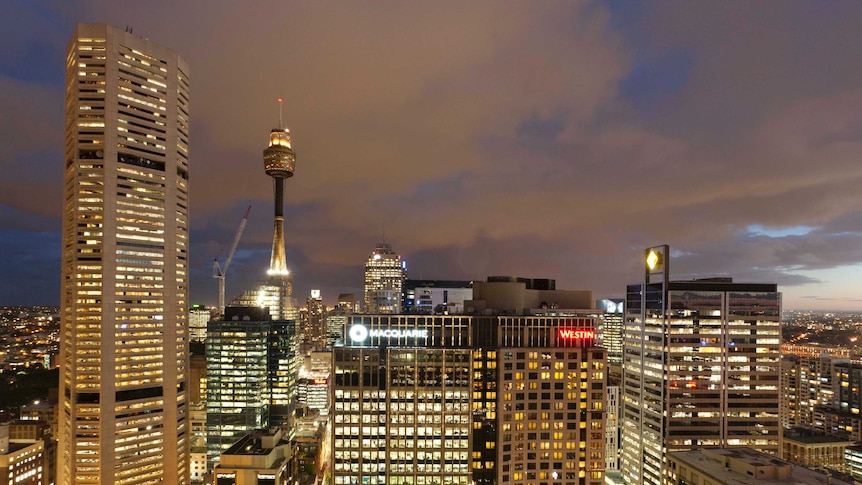The early days of the COVID-19 pandemic triggered a mass exodus of workers from central business district (CBD) offices — but, from this, came a new, hybrid work model that accommodated for employees’ unique needs.
While remote work remains the preference for many, some offices have struggled to convince their staff to make the trek back into central business districts and, experts say, it has come at a cost to newcomers.
In almost every major Australian city, during the month of June, new data from the Property Council of Australia shows commercial occupancy rates fell.
That rate is the measure of the area of rented space compared to area of total space available.
Melbourne’s commercial occupancy rate dropped from 49 per cent to 38 per cent, while Sydney’s fell from 55 per cent to 52 per cent.
Brisbane’s fell from 64 per cent to 53 per cent, while Adelaide’s dropped from 71 per cent to 64 per cent.
The only markets to record an increase in commercial occupancy were Canberra and Perth, where the rate rose from 53 per cent to 61 per cent and 65 per cent to 71 per cent, respectively.
Is working from home to blame?
The main culprit, according to the Property Council’s chief executive, Ken Morrison, is illness.
Mr Morrison said the results were disappointing, but not surprising.
“Office occupancy numbers have gone backwards for the first time in six months as a wave of [COVID-19’s] Omicron and flu cases kept workers away from the office,” he said.
“We have been seeing a steady increase in the number of workers returning to offices, but this stalled in June and has now declined in most capitals.
With winter nearly over, he said, it was encouraging that the latest COVID-19 wave had nearly run its course and that “recovery momentum can resume.”
Remote work not a ‘zero-cost exercise’
When occupancy rates drop off, small businesses, such as cafes, can miss out on a vital revenue stream.
Mr Morrison said governments needed to be mindful that encouraging people to work from home was not a “zero-cost exercise”.
“The costs are real and we see them in the vibrancy of our CBDs,” he said.
“We know office occupancy has been slow to recover, unlike other indicators, which snap back quickly.”
Are falling occupancy rates here to stay?
Tom Broderick — who heads up CBRE’s capital markets research — doesn’t think so.
“I think this appears to be a bit of a blip, with these most recent figures,” he said.
The July survey found the preference for greater flexibility, including working from home, was a better driver of occupancy levels, but this decreased from 63 per cent to 48 per cent.
Health concerns surrounding the latest COVID-19 wave were also a major influence on the data.
Mr Broderick said there could have been a simpler explanation: holidays.
“A lot of people in Melbourne and Sydney hadn’t been able to travel in 2020 and 2021,” he said.
“We’ve seen a lot of people take advantage of that by going away in July, so that has an impact on occupancy as well.”
While business leaders “absolutely” embraced hybrid work arrangements — leaning into platforms like Zoom and Teams to communicate remotely — Mr Broderick said having fewer people in offices meant “collaboration just falls apart.”
“Younger graduates do need to learn by osmosis,” he said, suggesting they need to overhear and watch senior people doing their work.
“And that’s lost when such a significant portion of people work from home.
“For the people who are making the effort to come to the office, is it really worth it when there’s only 20 to 30 per cent of your team actually in the office?”
.
